Global Food Crisis—CRS has identified 25 priority countries that are affected by high levels of acute food insecurity and malnutrition due to combinations of these drivers, which are expected to continue through 2024. Areas of urgent concern include East Africa and the Sahel, as well as Central America, Southern Africa and, more recently, Gaza.
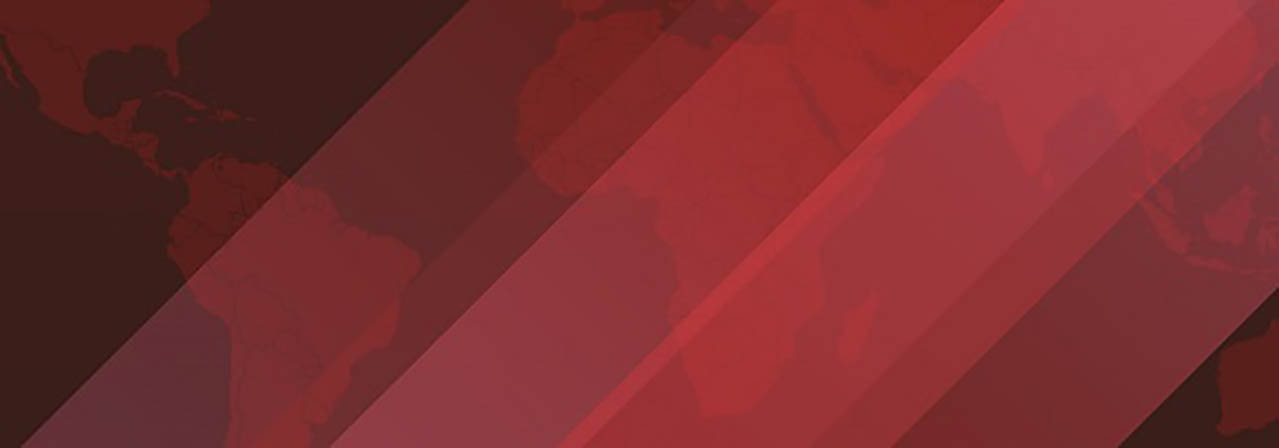

Global Emergency Update March 2024
Global Emergency Update Global Food Crisis
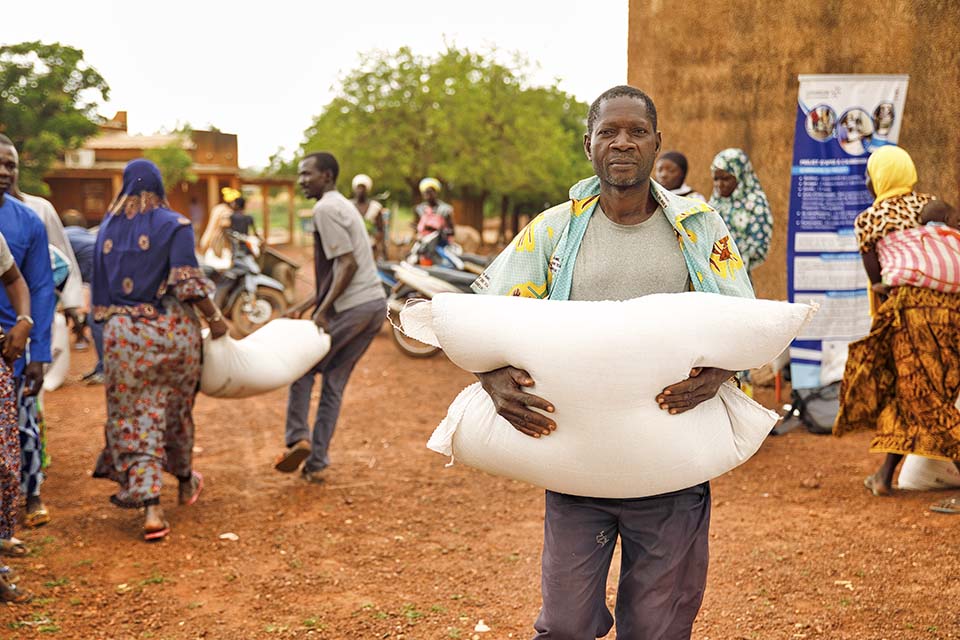
In Burkina Faso, families receive food support as part of a project helping communities build up resilience to shocks such as floods, drought and conflict.
Photo by Will Baxter/CRS
CONTEXT
More than 250 million people across 58 countries and territories are facing food insecurity—in some cases, starvation, destitution, extremely critical levels of acute malnutrition and death. Areas of urgent concern include East Africa and the Sahel, as well as Central America, Southern Africa and, more recently, Gaza.
At the root of this crisis are converging factors that have exacerbated the fragilities of global and local food systems—including climate change, heightened conflicts and the persistent economic ripple effects of COVID-19 and the Ukraine conflict. Food price inflation has put people under tremendous strain, and supply chain interruptions and high costs continue to slow humanitarian operations and disrupt local and regional markets.
Catholic Relief Services has identified 25 priority countries that are affected by high levels of acute food insecurity and malnutrition due to combinations of these drivers, which are expected to continue through 2024. Countries of the most critical concern include Haiti, Sudan, South Sudan, Ethiopia, Somalia, Nigeria, Burkina Faso, Yemen and Afghanistan.
CRS aims to meet urgent, lifesaving needs, while also establishing building blocks for system changes that can address the root causes of food insecurity.
CRS is working with local partners around the world on programs that ensure immediate, lifesaving support—including food distributions, nutritional supplements, clean water provision and health services. We are also addressing the underlying causes of food insecurity by supporting communities and farmers with agricultural approaches that restore degraded land, promote resilient seeds and practices that withstand droughts and other climate disasters, and bolster sustainable livelihoods. Our goal is to help families and communities break the cycle of hunger—and have the means to be food secure and resilient to recurrent, increasingly complex local and global shocks.
The underlying drivers of this current food crisis could have effects that last months and even years. Countries will be affected at different times and in different ways. For example, higher fertilizer costs driven by shortages in parts of Africa will affect yields for the 2024 harvest.
CRS will respond to this global crisis with a combination of immediate activities designed and modified for areas of conflict, alongside short- and medium-term initiatives designed to address the underlying causes of food insecurity. We aim to meet urgent, lifesaving needs, while also establishing building blocks for system changes that can address the root causes of both acute and chronic food insecurity.
Addressing land degradation is particularly important because it is a major contributor to hunger, undermining the production of food and livestock fodder. Degraded soils cannot produce sufficient nutritious food in the face of climate shocks. By investing in resilient landscapes and livelihoods, CRS and our partners will increase the resilience of agricultural production systems to the impacts of climate change through nature-based solutions and strengthened behaviors and capacities. These will include localized cooperative approaches that enhance social cohesion and a community’s ability to respond to future crises.
Our goals are to mitigate acute food insecurity and malnutrition, and ensure that:
- Vulnerable people have equitable, sufficient access to quality, nutritious food.
- Vulnerable people have enough nutrition for their bodies to absorb the food they eat.
- From producer to consumer, global and local food systems—including crop and livestock production, food processing, transportation, functioning markets and security—enable sustainable access to nutritious food.
SITUATIONS AROUND THE WORLD
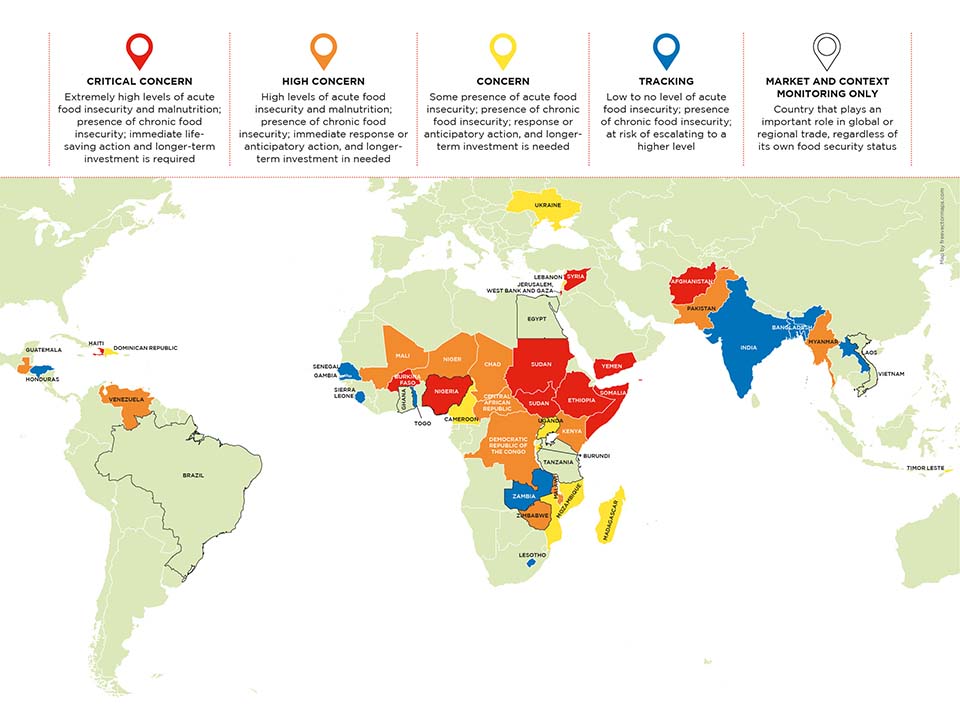
THE SAHEL
Sharply worsening conflict has caused mass displacement in the central Sahel. This, coupled with a new global hunger crisis, has created a humanitarian catastrophe in Mali, Burkina Faso and Niger. Almost 3 million people have fled violence, some multiple times and with little preparation. Most of those fleeing remain displaced within their country’s borders or have sought refuge in a neighboring country. Although neighboring communities have been welcoming and have shared their limited resources, overcrowding increases pressure on livelihoods and overall well-being.
CRS is carrying out an emergency response to save lives, reduce suffering, build resilience and support social cohesion and peacebuilding.
EAST AFRICA
East Africa, particularly Somalia, is enduring its worst drought in 40 years, as five consecutive rainy seasons have failed. This has caused catastrophic impacts: Tens of thousands of people have died, crops are drying up, livestock is starving, and chronic hunger and water insecurity are growing.
On top of localized problems contributing to the food crisis, the region relies heavily on Ukraine and Russia for food staples such as wheat and cooking supplies like sunflower oil and fuel. As the war in Ukraine intensified, the cost of these products skyrocketed, meaning families can now only afford a fraction of what they could once purchase. With the war showing no signs of slowing down, supply shortages are expected to continue for at least the next six months, potentially pushing the region even further into a state of severe food insecurity.
CRS has an enormous presence in East Africa, including large multi-sectoral programs in Kenya and Ethiopia. CRS' food security work in the region includes the rehabilitation of government water infrastructure; cash assistance to vulnerable families; farmer training and support; the provision of nutrient-rich agricultural seed to farmers; and support for livestock—including providing vaccinations, deworming, and training in rangeland and pasture production.
Sudan
It has been nearly a year since Sudan collapsed into civil war, with devastating consequences for civilians. CRS is making every effort to maintain programming as the conflict continues. This includes the operation of 21 health facilities in Darfur. Already, more than 100,000 Sudanese have fled to neighboring countries, including Egypt and Chad.
South Sudan
Malnutrition in South Sudan is a public health emergency. Seventy-five percent of the population needs humanitarian assistance. Some parts of the country are experiencing their third or fourth consecutive year of flooding. There is also a shortage of medicine and medical supplies. Cases of malaria and waterborne diseases have increased. Conflict and insecurity exacerbate these conditions and threaten lives and livelihoods. More than 2 million South Sudanese have fled and remain outside the country.
CRS is ensuring continued access to health, nutrition, food and clean water in some of the most remote parts of South Sudan. Working with our local partners, we are reaching 3.2 million people in Uror, Ayod and Twic East counties in Jonglei State.
Somalia
More than 6.5 million people are in need, and half of all children are expected to be acutely malnourished this year. The crisis has led to massive displacement and heightened conflict with more than 1 million people displaced. Livestock are dying and diseases like cholera are on the rise.
CRS is paying special attention to displaced communities and malnourished children. We have supported more than 70,000 people with health care, nutrition services, cash assistance, and clean water and hygiene supplies. CRS is expanding our capacity in Somalia, conducting assessments, positioning for scaled-up action, and adding offices in critical areas and staff members in relevant sectors. We are also preparing to implement long-term efforts around livelihoods, health and building resilience.
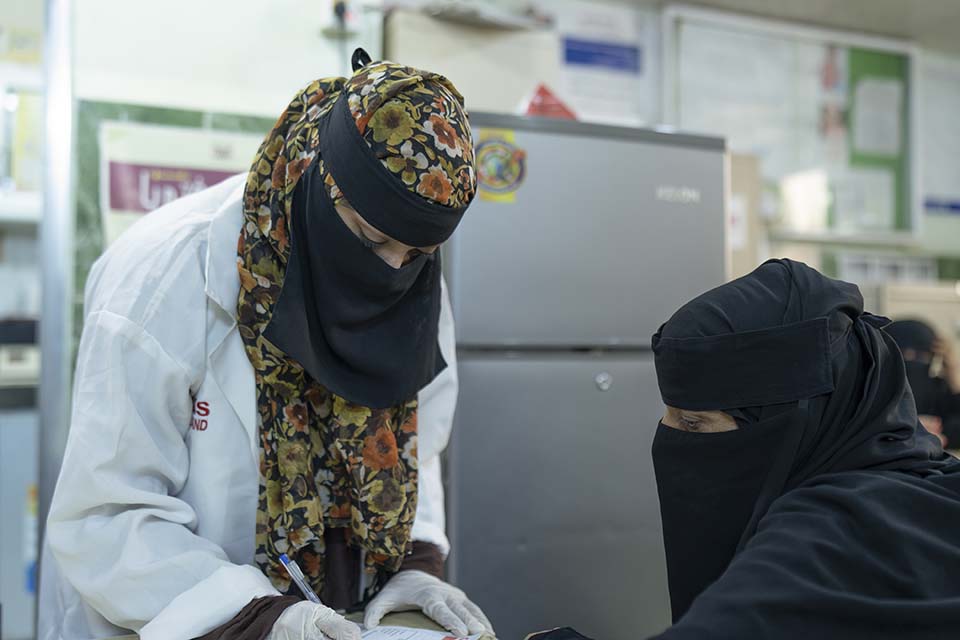
In Yemen, CRS has been supporting the training of young Yemenis—half of whom are women—to work in understaffed health facilities.
Photo by Ali Najip Mohamed Ebrahim for CRS
THE MIDDLE EAST AND CENTRAL ASIA
Yemen
More than 8 million children in Yemen need emergency education support, with at least 2 million out of school and suffering from acute malnutrition. This is in the larger context of a humanitarian crisis that has devastated families across Yemen as an eight-year war has been waged between Houthi rebels and forces loyal to the government, backed by a Saudi Arabia-led coalition. Eighty percent of the population is in urgent need of aid.
CRS is prioritizing efforts for health, employment, water and sanitation, and education. CRS has been supporting the training of young Yemenis—half of whom are women—to work in understaffed health facilities.
CRS also supports health facilities with improvements of infrastructure for water, sanitation, hygiene and waste. We are helping facilities to expand their mobile medical teams into hard-to-reach areas severely impacted by poverty and war.
And CRS will soon implement activities to ensure at least 3,000 children have access to education.
Afghanistan
Afghanistan is recovering from the compounded impacts of a years-long drought and economic hardships brought on by the sudden transition in government in August 2021. These events led to displacement, widespread loss of employment and a grinding halt to the Afghan economy. Current estimates indicate that nearly 20 million people are facing severe food insecurity, including more than 6 million who are facing famine-like conditions. CRS has provided 218,000 people with cash assistance for food, work and livestock feed, in Ghor, Daikundi, Bamiyan and Herat provinces since October 2021. Additionally, CRS supports 1,082 community-based classes, benefitting approximately 26,100 girls and boys ages 7 to 14 across those four provinces. CRS is also supporting agriculture, livelihoods, water supply, sanitation, hygiene and direct food assistance.
SOUTHEAST ASIA
Laos
Laos is a small, landlocked country in Southeast Asia with a population of more than 7 million people. Most of the Lao people live in rural, remote communities and face challenges when it comes to accessing essential services, like education and health care. As a result, 33% of children under the age of 5 in Laos have impaired growth and development, and families there struggle to feed their children. Since 2007, CRS has been working in Laos in partnership with the local government to help address inequality and alleviate poverty and hunger. Through The McGovern-Dole International Food for Education and Child Nutrition Program, which is funded by the USDA, CRS has provided nutritious school meals to 40,000 students daily since 2016. CRS also teaches local cooks, storekeepers and community leaders hygienic ways to store and prepare food.
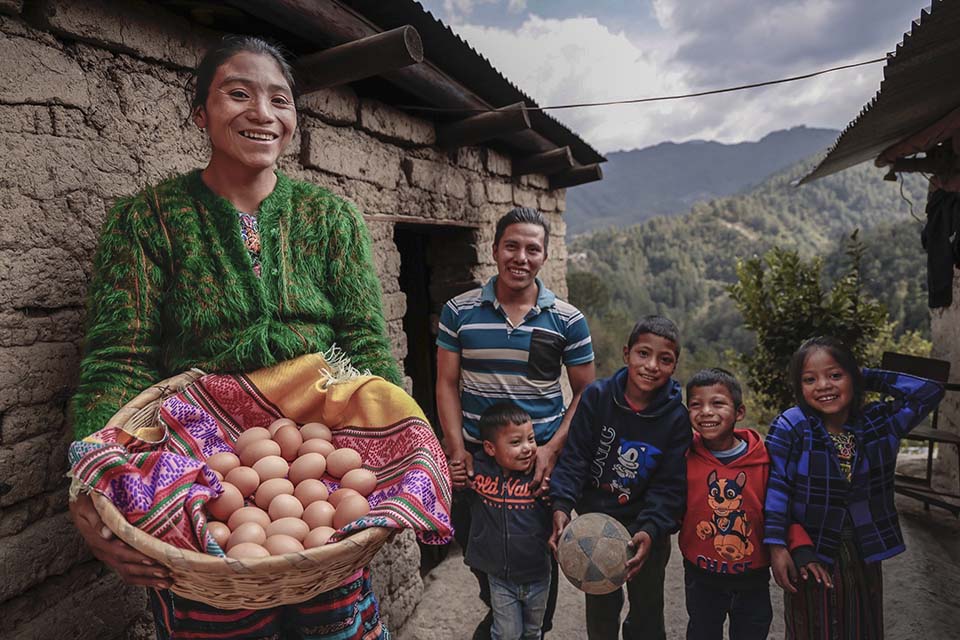
In Guatemala, families receive food assistance and farmers learn climate-smart agricultural techniques to help them grow better crops for their communities.
Photo by Osca Leiva/Silverlight for CRS
LATIN AMERICA
Guatemala
For the past several years, Central America has been experiencing a drought that has destroyed crops and made it harder for families there to feed themselves and earn a living. In Guatemala, where almost half the population can't afford to put food on the table, CRS is providing ways to change that through a U.S. Agency for International Development-funded project that provides cash and food vouchers, and also organizes agricultural fairs. With the cash and food vouchers, people are able to buy what they need while supporting local businesses and helping their local economy. The fairs help people buy seeds, farming tools, fertilizer, and other items like baby chickens. These chicks not only provide eggs to eat, but also a source of income once they are old enough to be sold.
When they attend the agricultural fairs, members of the community can also attend demonstration sessions where they learn to recognize the symptoms of acute malnutrition, how to select food, and prepare nutritious meals. CRS is also working across Guatemala to teach climate-smart farming techniques. By learning how to use their natural resources in the best way possible, farmers are ensuring their cropland will remain healthier for longer. This means more and better crops for their families and community.
With the cash and food vouchers, people are able to buy what they need while supporting local businesses and helping their local economy.
ACTIVITY HIGHLIGHTS
CRS and our partners will support a range of activities tailored to the local context, evolving as situations change.
FOOD AND NUTRITION
To meet urgent needs, activities will include:- Supporting health systems—including support for medical staff, equipment and training—to ensure families and communities have access to lifesaving treatment, nutrition and care.
- Distributing food supplements or ready-to-use therapeutic food to help those suffering from severe malnutrition.
- Distributing food in areas with limited market supply to mitigate extreme food insecurity.
- Providing cash assistance or vouchers so families can buy vital food and living supplies.
- Supporting community-led efforts to manage acute malnutrition through nutrition screening and referrals for severe cases.
- Supporting families in providing appropriate food and feeding practices for infants and young children.
- Establishing mobile health units to provide nutrition services to displaced and isolated communities.
- Delivering health consultations to treat diseases and support maternal and child health.
AGRICULTURE AND LIVELIHOODS
Examples of activities to restore degraded land and address the root causes of hunger include:
- Investing in landscape regeneration to improve yields and incomes and maintain food production during extreme weather events.
- Providing farmer families with drought-resistant seeds of nutrient-rich crops.
- Providing tools, materials and other resources needed for climate-resilient agricultural production.
- Promoting low cost, high impact, locally relevant technologies for land restoration that can renew soils and productivity.
- Supporting nomadic herding communities to feed and protect the health of their livestock.
- Promoting kitchen gardens to help families grow vegetables.
- Supporting local market actors that sell food to promote more resilient food markets.
- Helping local governments vaccinate and deworm livestock in communities hosting displaced herders.
- Working with community-led savings and lending groups that provide people with access to capital to start new businesses, pay school fees and medical costs, improve their housing, and buy seeds, tools and livestock.
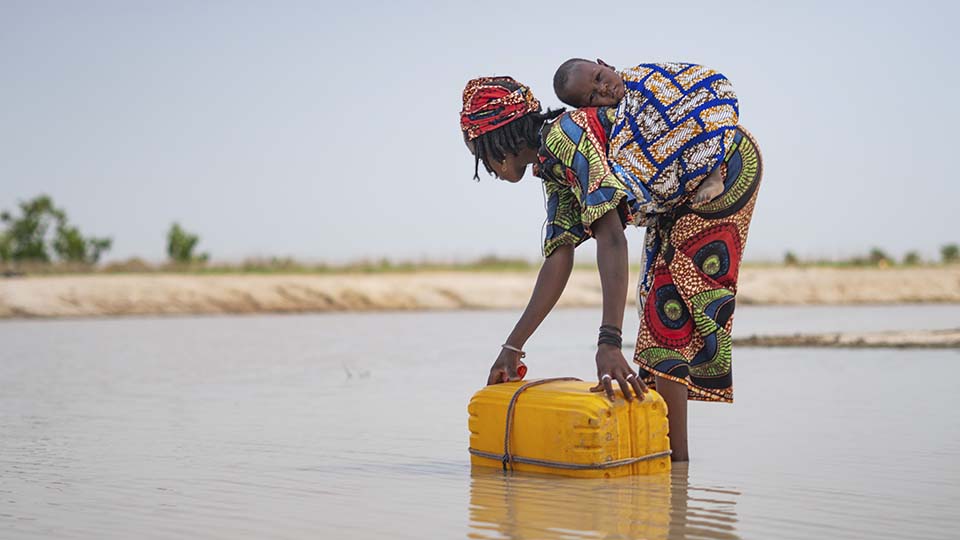
In Nigeria, to help ease these tensions between farmers and herders and to bring clean water closer to peoples’ homes, CRS constructed and rehabilitated 21 water points, including three solar-powered boreholes, 16 earth dams and water retention ponds like the one pictured here.
Photo by Radeno Haniel for CRS
WATER, SANITATION AND HYGIENE
Meeting critical needs will involve engaging in the following activities:
- Providing access to clean water in ways that are tailored to the local contexts—through water pumps, trucking and other means—for communities most affected by drought or displacement.
- Providing equipment, water pumps, fuel and the community-based maintenance needed to repair local water infrastructure, including community boreholes.
- Providing supplies for water, sanitation and hygiene directly or through cash or vouchers.
- Conducting trainings on hygiene and sanitation practices that promote health in areas where displaced communities live.
DISASTER PREPAREDNESS
In response to immediate requirements, programming will encompass:
- Investing in preparedness and building capacity for context monitoring, contingency planning, and nutrition, cash and market-based programming before a crisis occurs.
- Leveraging technology to build analytical capacity among communities and local partners so they can forecast and identify a food security crisis before it impacts people’s lives, as well as strengthening their operational capacity to respond.
COMMUNITY PEACEBUILDING AND SAFETY
To respond swiftly to urgent requirements, our approach will entail:
- Leading community dialogue sessions to promote conflict mediation.
- Identifying opportunities to strengthen social cohesion in other program activities.
- Training community focal points on protection issues associated with food insecurity, like early marriage and sexual violence, as well as ensuring referral pathways for specialized support.
- Raising awareness in communities on rights, measures for safety and protection, and prevention of risk or harm.
- Ensuring protection risk analysis, effective information sharing, and program design and targeting that provide equitable and safe access to food and food security program activities, especially for the most vulnerable people.
- Creating accessible feedback mechanisms, training staff on safe and appropriate conduct, and supporting communities to access services through service mapping and referrals.
Recent Global Emergency Updates
February 2024
Ukraine War: Two Years of Emergency Relief and Recovery—In February of 2022, Russia invaded Ukraine, causing massive destruction and loss, separating families and uprooting millions of people from their homes. Over the past two years, Catholic Relief Services has worked with Caritas and other partners across Ukraine and the region to provide a range of support to meet people’s urgent needs for food, shelter, living supplies, medical care and counseling.
January 2024
Emergency Response in the Holy Land—Catholic Relief Services and our partners are responding to immediate needs of families facing hunger and displacement in the Holy Land.

